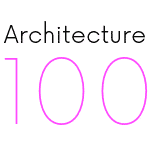Where you have internal doors, specify the detail. You will need to identify the operation mechanism, be it sliding into wall pocket or a conventional swing-type; the door style/design as well as its fire-rating. Coupled to the door you have ironmongery selections around hinge colours, handles, escutcheons, locks and latches. This information should be ascribed onto the plans so as there’s no doubt about what you expect to be fitted on site.
No matter how ergonomically designed the extension, you may still find yourself with the odd off-cut of space under the stairs, adjacent to chimney stacks, behind the swing of a door or under the roof eaves. In these nooks, consider some bespoke carpentry to provide bonus storage, seating, shelving or other such comfort.
If you elect wood flooring, then make provisions to show so on plan. This will allow the fitter to make provisions for expansion spacing underneath the skirting, making the need for scotia beading redundant. On wood flooring, ruminate on the right material for your new space, be it laminate, engineered or hardwood flooring.
Fitted kitchens, cupboards and wardrobes should be left out of scope of the drawings because they will most probably be supplied and fit by external specialists, who will conduct their own design work in-house. The only consideration to your working drawings will be to allow for any utility supplies, the necessary install space and to adjust room centers accordingly.
If you would like some free planning advice, get in touch with us.
